Orinoco piranha - Pygocentrus cariba
Scientific name: Pygocentrus cariba
Common name: Orinoco piranha
Family: Serrasalmidae
Usual size in fish tanks: 20 - 25 cm (7.87 - 9.84 inch)
014
Recommended pH range: 6 - 7.5
Recommended water hardness: 1 - 12°N (17.86 - 214.29ppm)
0°C 32°F30°C 86°F
Recommended temperature range: 24 - 28 °C (75.2 - 82.4°F)
The way how these fish reproduce: Spawning
Where the species comes from: South America
Temperament to its own species: aggressive/territorial
Temperament toward other fish species: aggressive to smaller
Usual place in the tank: Middle levels
Overview
Pygocentrus cariba (Orinoco piranha, “Caribe”) is a robust, fast-moving serrasalmid native to the Orinoco and Lake Maracaibo basins (Venezuela, Colombia). Juveniles shoal for safety, while adults form loose groups and establish hierarchies. In captivity they demand ample space, excellent filtration, and thoughtful aquascaping to disperse aggression.
Care & Tank Setup
- Tank size: Single specimen ≥ 200 l / 55 gal; stable group of 6 fish ≥ 500–600 l / 132–160 gal with tank length ≥ 150–180 cm. Larger volumes markedly reduce intraspecific nipping.
- Water: pH 6.0–7.5, hardness 1–12 °dGH (≈18–214 ppm), temperature 24–28 °C (75–82 °F). Keep nitrate low; maintain strong, oxygen-rich flow.
- Filtration & hygiene: Oversized biofiltration, high turnover, and strict maintenance (weekly 30–50% water changes) to control nitrogenous waste.
- Aquascape: Open swimming lanes with driftwood, stout branches, and hardy plants (or artificial foliage) to create sight-line breaks and multiple retreat points. Dim lighting calms skittish behavior.
- Cover & lids: Tight-fitting lid is mandatory—startle jumps are common.
Diet & Feeding
Obligate carnivore and opportunistic scavenger. Offer a varied, aquatic-sourced diet to avoid fatty-liver issues associated with mammalian/avian meats.
- Staples: Quality carnivore pellets/sticks, freshwater fish fillet (tilapia, pollock), shrimp/prawn, mussel, squid, earthworms.
- Rotate: Krill, lancefish, insect larvae, occasional gelatin-bound DIY mixes with vitamins.
- Avoid: Mammalian meats (beef heart), dog/cat foods, and routine feeder fish (pathogens, thiaminase, poor nutrition).
- Feeding style: Small, frequent portions; remove leftovers immediately to preserve water quality.
Behavior & Compatibility
- Conspecifics: Juveniles shoal; adults are semi-gregarious with pecking order. Provide numbers (6 ) and space to diffuse aggression; rearrange décor if one fish is targeted.
- Other fish: Not community-safe. Predatory and excitable; may injure even similarly sized tankmates. Keep as species-only.
- Handling: Use rigid containers when moving; never net by hand. They are extremely fast and capable of serious bites.
Sexing
No reliable external dimorphism outside of breeding condition. Males may exhibit slightly stronger body coloration (ventral flush) and proportion differences when mature, but these cues are inconsistent.
Breeding
P. cariba is a substrate/pit spawner with parental care. In very large, low-stress aquaria, pairs may clear depressions among roots or open sand, deposit adhesive eggs, and guard fry. Captive spawning is possible but uncommon and typically requires a seasoned group, excellent condition, and seasonal cues (temperature and water-level changes).
Lifespan
Typically 10–15 years in captivity with proper care; outliers may exceed this. Long lifespan underscores the need for spacious, stable systems and responsible ownership.
Origin
South America: Orinoco River drainage and the Lake Maracaibo basin (Venezuela & Colombia).
Notes & Ethics
- Check local regulations—some regions restrict piranha possession or transport.
- Avoid sensationalism (feeding frenzies, live prey). Prioritize welfare, water quality, and stable social structure.
At-a-Glance (Care Box)
- Size (captive): 20–25 cm TL (8–10")
- Temperament: Predatory; species-only
- pH: 6.0–7.5 | GH: 1–12 °dGH
- Temp: 24–28 °C (75–82 °F)
- Tank: Single ≥ 200 l / 55 gal; group (6 ) ≥ 500–600 l / 132–160 gal
- Diet: Carnivore (aquatic proteins; pellets)
- Breeding: Substrate/pit spawner; parental care (rare in home aquaria)
Pictures
Bought by aqua-fish.net from jjphoto.dk.
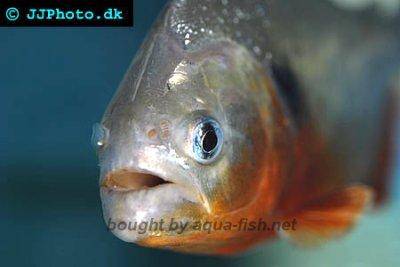


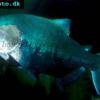 Black
Black 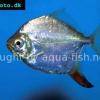 Redhook
Redhook 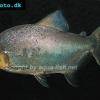 Red
Red 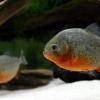 Red
Red 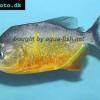 San
San 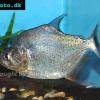 Pinche
Pinche